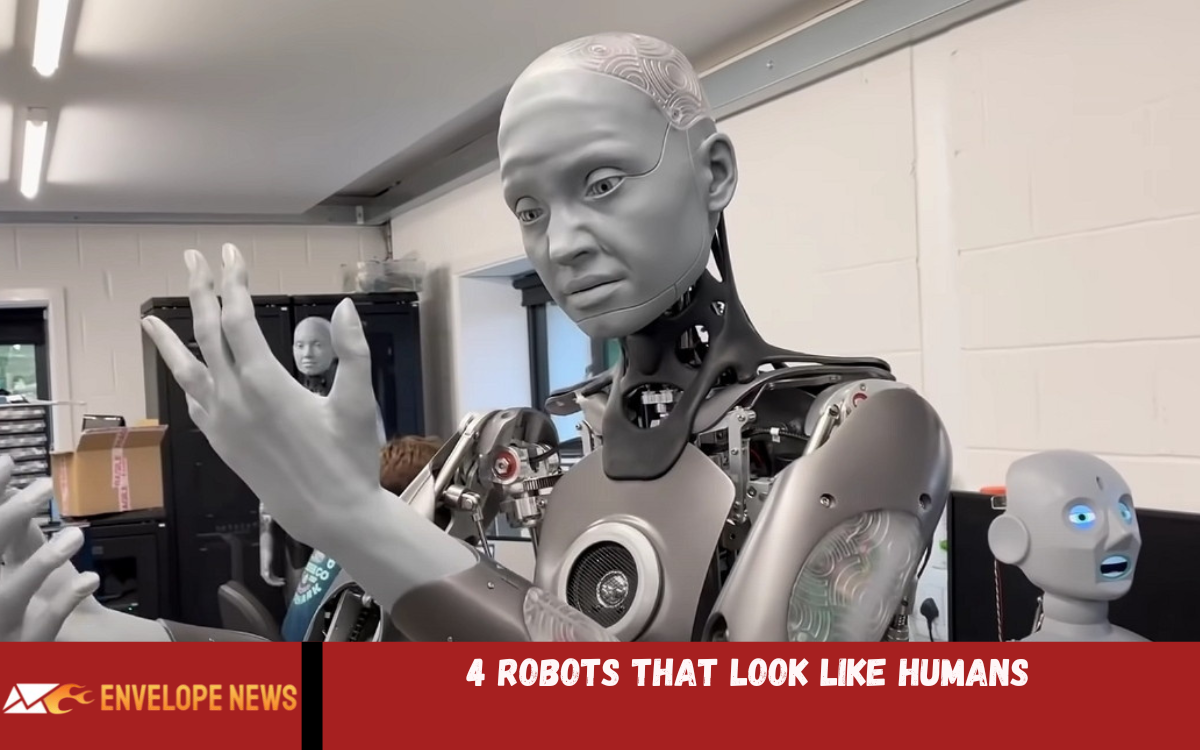Technology has come a long way, and one of its most fascinating creations is humanoid robots—robots designed to look and act like humans. These advanced machines are built not just to perform tasks but to connect with us on a more personal level through facial expressions, speech, and even emotions. From science fiction to real life, humanoid robots have moved from our imagination into reality.
Today, several robots have amazed the world with their lifelike appearance and human-like behavior. These robots are being developed for various purposes, including education, customer service, healthcare, and even companionship. What makes them stand out is their ability to mimic human movements, show emotions, and hold conversations just like real people.
We’ll explore four remarkable robots that closely resemble humans. Each has unique features and cutting-edge technology that make it not just functional but also fascinating to watch. Whether you’re a tech lover or simply curious about the future of robotics, these human-like robots will surely grab your attention.
What Are Humanoid Robots?
They look and move like human beings. They often have a head, face, arms, and legs that mimic our appearance and behavior. But they’re not just about looks—they’re built to interact with people in natural ways, using speech, facial expressions, gestures, and even eye contact.
These robots are powered by advanced technologies like artificial intelligence (AI), sensors, and machine learning. Some can walk, talk, show emotions, recognize faces, and even respond to questions. Engineers and scientists create them for different purposes, including customer service, education, entertainment, and healthcare.
The goal of humanoid robots is to make communication with machines feel more human. Because they resemble us, people find it easier to connect with them, especially in settings like hospitals, schools, or homes.
Sophia – The World’s Most Famous Humanoid Robot
Sophia is one of the most well-known and lifelike humanoid robots in the world. Created by Hanson Robotics, a Hong Kong-based company, Sophia was first activated in 2016 and quickly became a global sensation. What makes her unique is her human-like face, realistic facial expressions, and ability to have real-time conversations with people.
Sophia is powered by artificial intelligence (AI), which allows her to recognize faces, understand speech, hold eye contact, and respond with thoughtful answers. She can even show emotions like happiness, sadness, and surprise through facial movements. Her creators designed her to learn from interactions and get smarter over time.
One of Sophia’s most significant milestones came in 2017 when she was granted citizenship by Saudi Arabia, making her the first robot in history to receive a legal nationality. She has appeared in interviews, spoken at global conferences, and even joked with celebrities.
Ameca – The Most Expressive Robot Ever Built
Ameca is a next-generation humanoid robot developed by Engineered Arts, a UK-based robotics company. What sets Ameca apart from other robots is its incredibly realistic facial expressions and smooth body movements. Many people who see America for the first time are amazed by how naturally it can smile, blink, raise its eyebrows, and even show surprise or confusion—just like a human.
Unlike older robots that often look stiff or robotic, Ameca’s design focuses on human interaction. It doesn’t just talk—it reacts in real-time with gestures, head tilts, and facial cues that make conversations feel much more lifelike. Ameca doesn’t walk yet, but it can move its arms and hands with impressive precision.
Powered by advanced artificial intelligence and a flexible software platform, Ameca is often used as a research tool to explore how humans and machines can better communicate. It’s also a popular star at tech expos and events around the world because of its eye-catching design and interactive personality.
Read Also: Why Some People Love the Smell of Gasoline
Why Do We Build Robots That Look Like Us?
Building robots that look like humans might seem like science fiction, but there’s a very real reason behind it. When robots resemble us through facial features, body language, and speech, we feel more comfortable interacting with them. This makes communication more manageable and natural, especially in places like homes, hospitals, classrooms, or customer service centers.
Humanoid robots are designed to understand and respond to human emotions, expressions, and social cues. By looking and acting like us, they can build trust, hold conversations, and even offer emotional support. This is especially useful when robots are used to help older people, children, or people with disabilities.
There’s also a practical side: a robot shaped like a human can use tools, buttons, and devices that were initially made for people. Instead of redesigning entire environments, engineers can build a robot that fits in.
Frequently Asked Questions
What is the purpose of building human-like robots?
Humanoid robots are used in education, healthcare, customer service, and research to improve communication and interaction with people.
Is Sophia really a citizen of Saudi Arabia?
Yes! In 2017, Sophia became the first robot to be granted citizenship by Saudi Arabia.
Can these robots move or walk like humans?
Some, like Sophia and Nadine, have limited movement. Ameca doesn’t walk yet but can move its face, arms, and hands fluidly.
Are these robots available to the public?
These robots are not sold like regular gadgets. They’re usually used for research, exhibitions, and special projects.
Are human-like robots the future of AI?
Many experts believe humanoid robots will play a significant role in the future, especially in human-AI collaboration and daily life support.
Conclusion
Humanoid robots like Sophia, Ameca, Nadine, and Jia Jia are potent examples of how far technology has come. These robots are impressive not only in how they look but also in how they interact with people through speech, expressions, and even gestures. Each one represents a different milestone in the world of robotics, showing us what’s possible when machines are built to reflect human traits.

